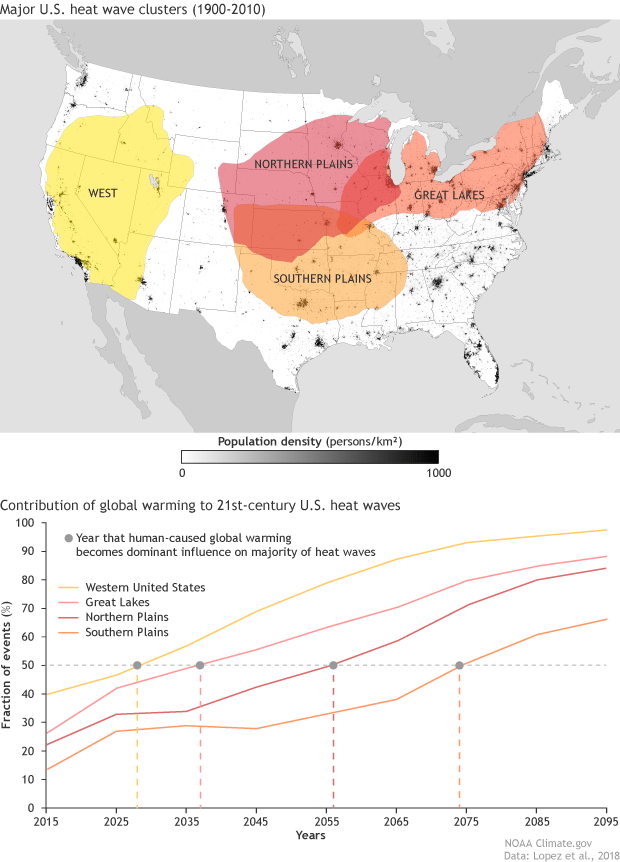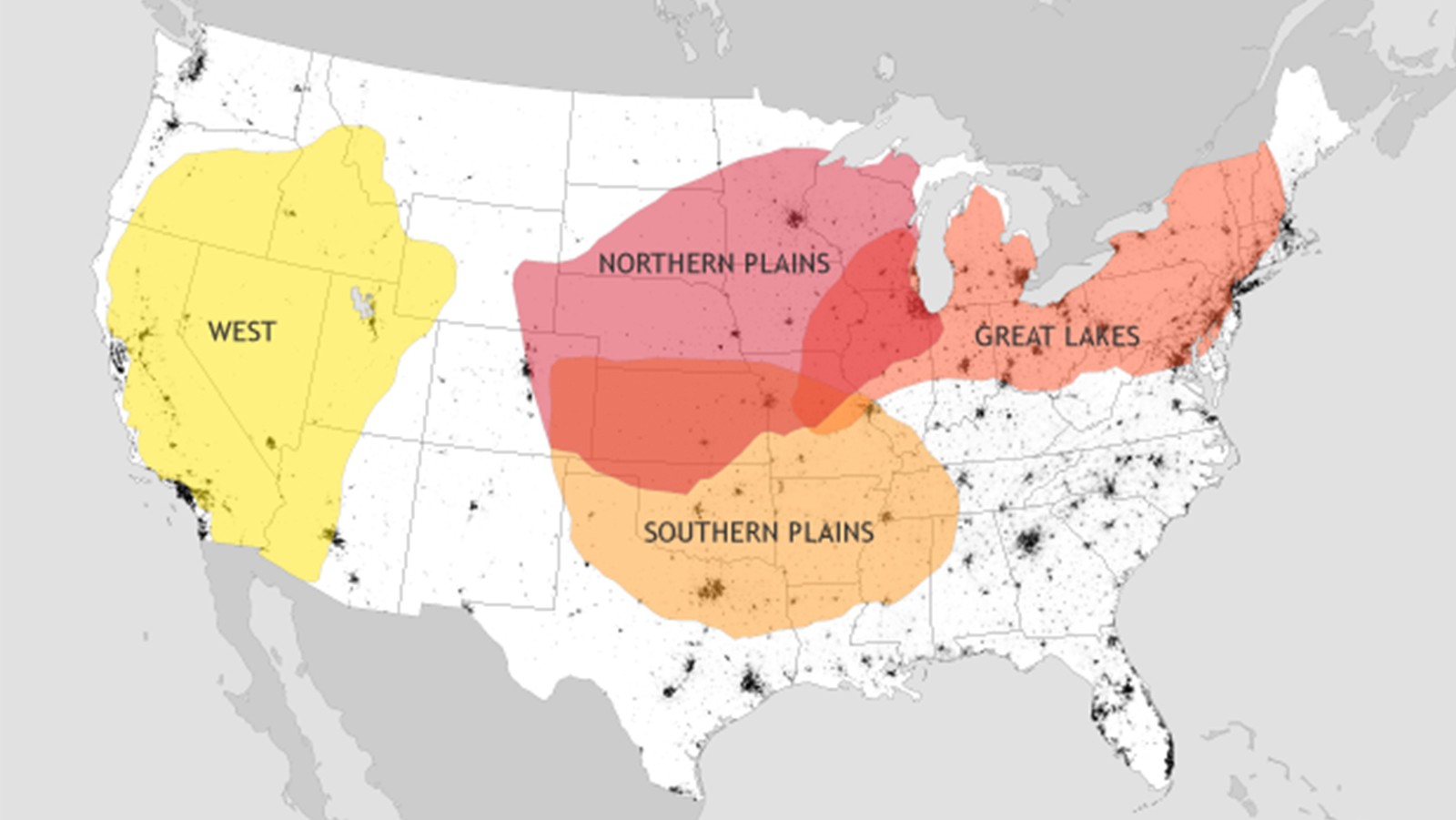Climate projections for the twenty-first century suggest an increase in the occurrence of heat waves. However, the time at which externally forced signals of anthropogenic climate change (ACC) emerge against background natural variability (time of emergence (ToE)) has been challenging to quantify, which makes future heat-wave projections uncertain. In a new article published in Nature Climate Change (Lopez et al., 2018), Hosmay Lopez and his team combine observations and model simulations under present and future forcing to assess how internal variability and ACC modulate US heat waves. The team shows that ACC dominates heat-wave occurrence over the western United States and Great Lakes regions, with ToE that occurred as early as the 2020s and 2030s, respectively. In contrast, internal variability governs heat waves in the northern and southern Great Plains, where ToE occurs in the 2050s and 2070s; this later ToE is believed to be a result of a projected increase in circulation variability, namely the Great Plain low-level jet. Thus, greater mitigation and adaptation efforts are needed in the Great Lakes and western United States regions. This work was highlighted in climate.gov.

